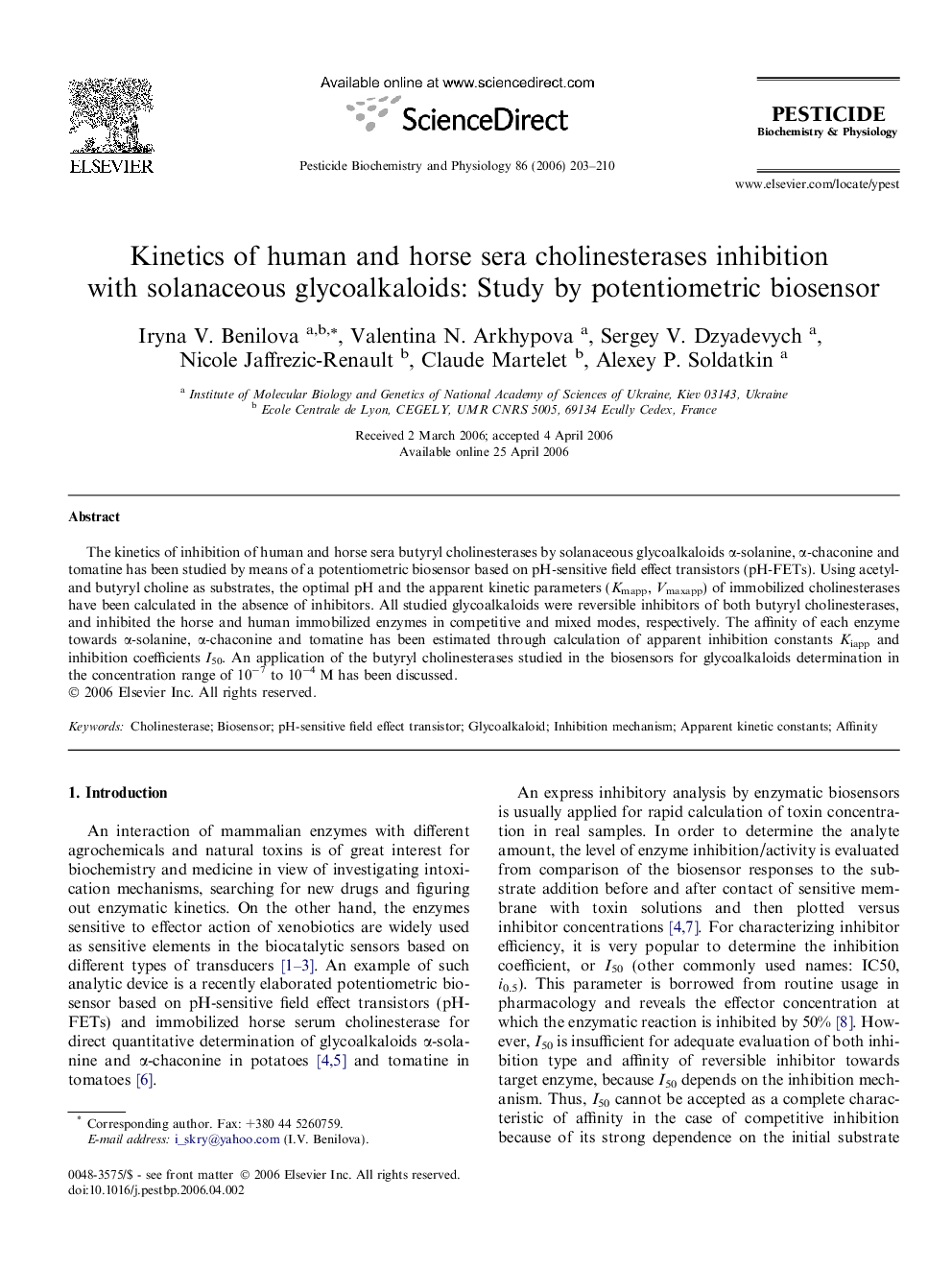| Article ID | Journal | Published Year | Pages | File Type |
|---|---|---|---|---|
| 2010247 | Pesticide Biochemistry and Physiology | 2006 | 8 Pages |
Abstract
The kinetics of inhibition of human and horse sera butyryl cholinesterases by solanaceous glycoalkaloids α-solanine, α-chaconine and tomatine has been studied by means of a potentiometric biosensor based on pH-sensitive field effect transistors (pH-FETs). Using acetyl- and butyryl choline as substrates, the optimal pH and the apparent kinetic parameters (Kmapp, Vmaxapp) of immobilized cholinesterases have been calculated in the absence of inhibitors. All studied glycoalkaloids were reversible inhibitors of both butyryl cholinesterases, and inhibited the horse and human immobilized enzymes in competitive and mixed modes, respectively. The affinity of each enzyme towards α-solanine, α-chaconine and tomatine has been estimated through calculation of apparent inhibition constants Kiapp and inhibition coefficients I50. An application of the butyryl cholinesterases studied in the biosensors for glycoalkaloids determination in the concentration range of 10â7 to 10â4 M has been discussed.
Keywords
Related Topics
Life Sciences
Agricultural and Biological Sciences
Agronomy and Crop Science
Authors
Iryna V. Benilova, Valentina N. Arkhypova, Sergey V. Dzyadevych, Nicole Jaffrezic-Renault, Claude Martelet, Alexey P. Soldatkin,
